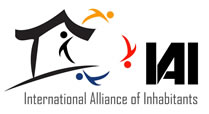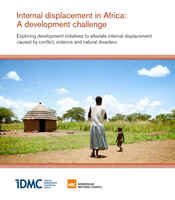Report: How can development actors engage in internal displacement?
IDMC's latest report highlights how internal displacement is not just an humanitarian, human rights or peace-building challenge, but also a development one. There are profound financial implications for people, families and communities affected by internal displacement. By examining the relationships between development action and human rights, this report identifies some key potential areas of intervention by development actors.
Internally displaced people (IDPs) “are persons or groups of persons who have been forced or obliged to flee or to leave their homes or places of habitual residence, in particular as a result of or in order to avoid the effects of armed conflict, situations of generalized violence, violations of human rights or natural or human-made disasters, and who have not crossed an internationally recognized state border” (1998, Guiding Principles on Internal Displacement). As of the end of 2011, more than 26 million people were internally displaced by conflict and violence across the world. More than a third of them were in Africa, the region with the highest number of IDPs and where they outnumber refugees by five to one. Sudan, Democratic Republic of the Congo (DRC) and Somalia have the continent’s largest populations of internally displaced people. Large numbers of people in Africa have also been internally displaced by natural disasters, especially droughts.
Internal displacement situations are often fluid, with new displacements and movements of people in search of a durable solution sometimes happening at the same time. Preventing new displacement is as much of a challenge as resolving existing situations. In a number of African countries, IDPs live in protracted displacement; their process of finding a durable solution has stalled, often leaving their rights unprotected and their communities marginalised. The former Representative of the UN Secretary-General on IDPs’ human rights, Walter Kälin, has observed that IDPs in many African countries are often worse off when humanitarian organisations withdraw following an emergency, leaving them without any real prospects of rebuilding their lives in a sustainable manner.
A father who had been internally displaced for over a decade in northern Uganda told Kälin in 2009: “I don’t need food aid. I need help in clearing my land, a shovel and seeds. And some rain.” In essence, he said that internal displacement was not only a humanitarian, human rights or peace-building challenge, but also a development one.
Download:
Commentaires
%login_link_starAuthentifiez vous ou créez un nouveau compte utilisateur pour commenter.

